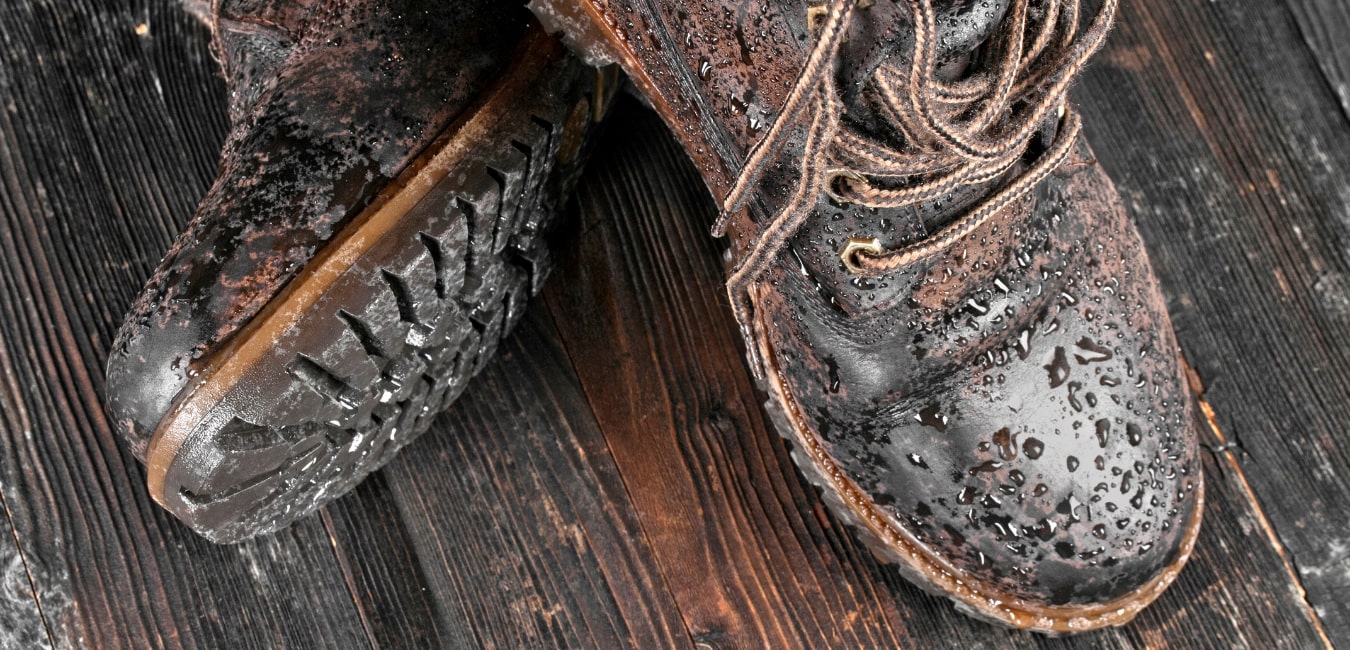How do I dry my leather goods?

Now your leather boots, jacket, handbag, etc are soaked and you’re worried they may be ruined.
No worries! There are plenty of ways to make sure your leather lives to see another day
What happens when leather gets wet?

How leather reacts when wet, truly depends on the type of leather.
Some leathers, like oil-tanned, are finished to resist water and weather. It can withstand daily wear and tear with some exposure to water and sun.
Some leathers, like suede, can be instantly ruined by water damage without some kind of protection. This is why you need to apply a protectant like Kiwi to suede shoes or bags when you purchase them.
That being said, all leather can eventually end up cracked and dry by prolonged exposure to the elements, whether it was made for it or not.
So why does this happen?
Think about when you wash your face with water. Sometimes, after you’ve dried your face, you may experience dry and tight skin. Just like with your skin, as the water dries, it removes oils from the hide. This can damage the leather and can leave you with leather that feels hard and rigid.
This is not ideal, especially if you’re using your leather product every day. You want to be sure to take action quickly to preserve your leather.

What is the best drying process for my leather?
Firstly, you want to remove excess water. Take a dry cloth and dab off any moisture that has beaded or pooled on your leather goods. Try not to rub it as that will just push more water into the leather.
Once you’ve removed the moisture on top, you are going to allow your leather goods to air dry naturally.

Help your leather keep its shape while drying. Shoes and handbags should be stuffed with balled up paper.
If you need to dry out a jacket, hang it on a hanger with a bit of padding in the shoulders. This will prevent the leather from drying with creases and wrinkles.
When the leather is no longer soaked, but slightly damp, you’ll want to apply a leather conditioner.
This will keep the leather from losing any oil with the rest of the water evaporation. Massage it into the surface of your leather, with a soft rag or even just your hands, then let it finish drying naturally overnight.
If you find any patches that feel particularly dry or stiff the next morning, go ahead and spot treat with some more of your conditioner to soften the leather and you should be good to go!
Let’s cover what not to do when drying your leather.

- -Do not use heat.
- -Do not use a blow dryer.
- -Do not set your leather goods on or by a heat vent/radiator.
- -Do not set your leather in direct sunlight.
- -I repeat; do not use heat.
I know that’s really repetitive, but I just want to get that thought out of your head right away. Using heat can cause even more damage to the leather than just the water. Letting the leather dry naturally takes way less of a toll.
The leather can shrink and shrivel far faster than you realize. Once that happens, there aren’t a lot of options for you to get it back to normal. Heat will also bring on that dry cracked leather you were trying to avoid by drying it in the first place.
What leather conditioner should I use?
 Here at The Leather Guy, we are big fans of both MooBuzz and Smith’s Leather Balms. Both are great leather conditioners, handcrafted by small businesses, with all natural ingredients.
Here at The Leather Guy, we are big fans of both MooBuzz and Smith’s Leather Balms. Both are great leather conditioners, handcrafted by small businesses, with all natural ingredients.
So what’s the difference?
MooBuzz uses beeswax to protect and pure neatsfoot oil to condition. It is soft to the touch and spreads on easily. It has no discernible scent. Smith’s Leather Balm uses beeswax to protect and organic cocoa butter to condition. It is a harder balm that you can easily warm up with your hands. It has a slight scent that reminds me of chocolate on account of the cocoa butter and almond oil.
Both of these balms are safe to apply with your hands. The beeswax creates a layer of buildable protection helping to make your items more water-resistant. The conditioning agents penetrate the leather to moisturize and soften the leather.
Using either of these in your regular leather care regimen will ensure that your leather items will last through the test of time and better withstand your next run in with inclement weather!

